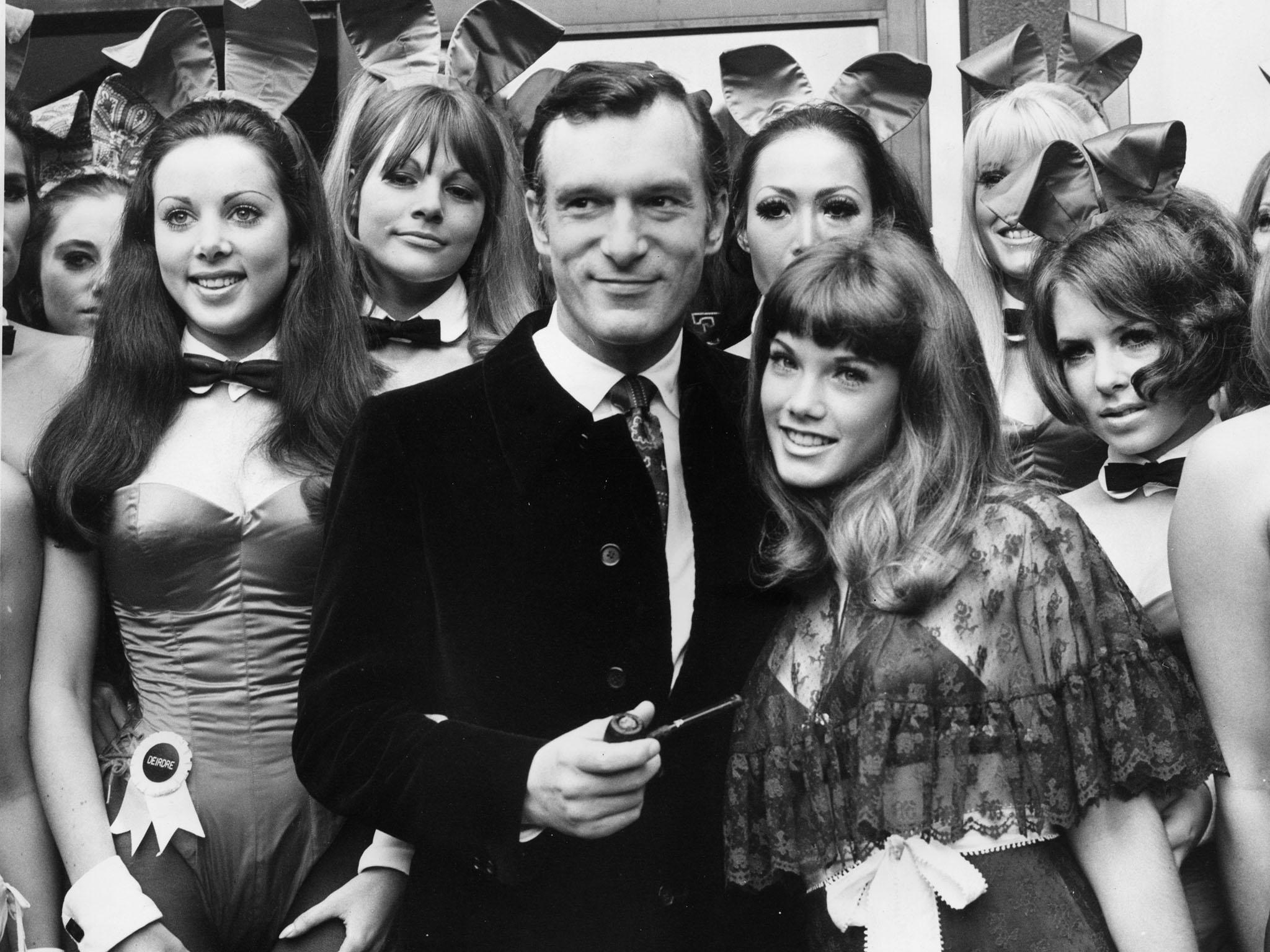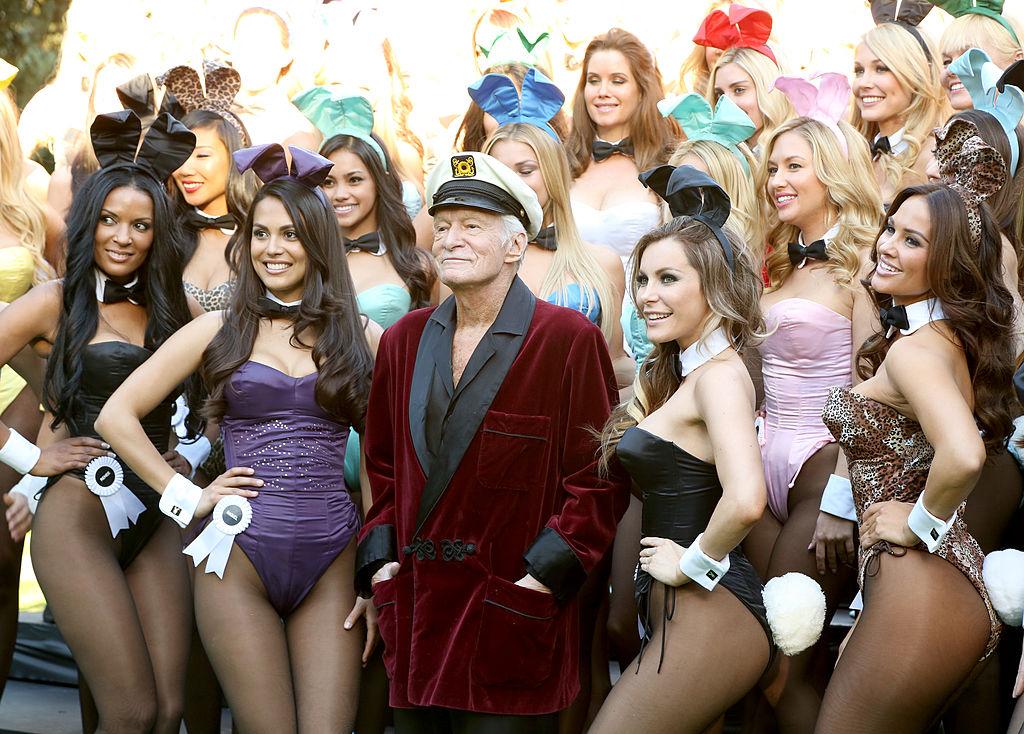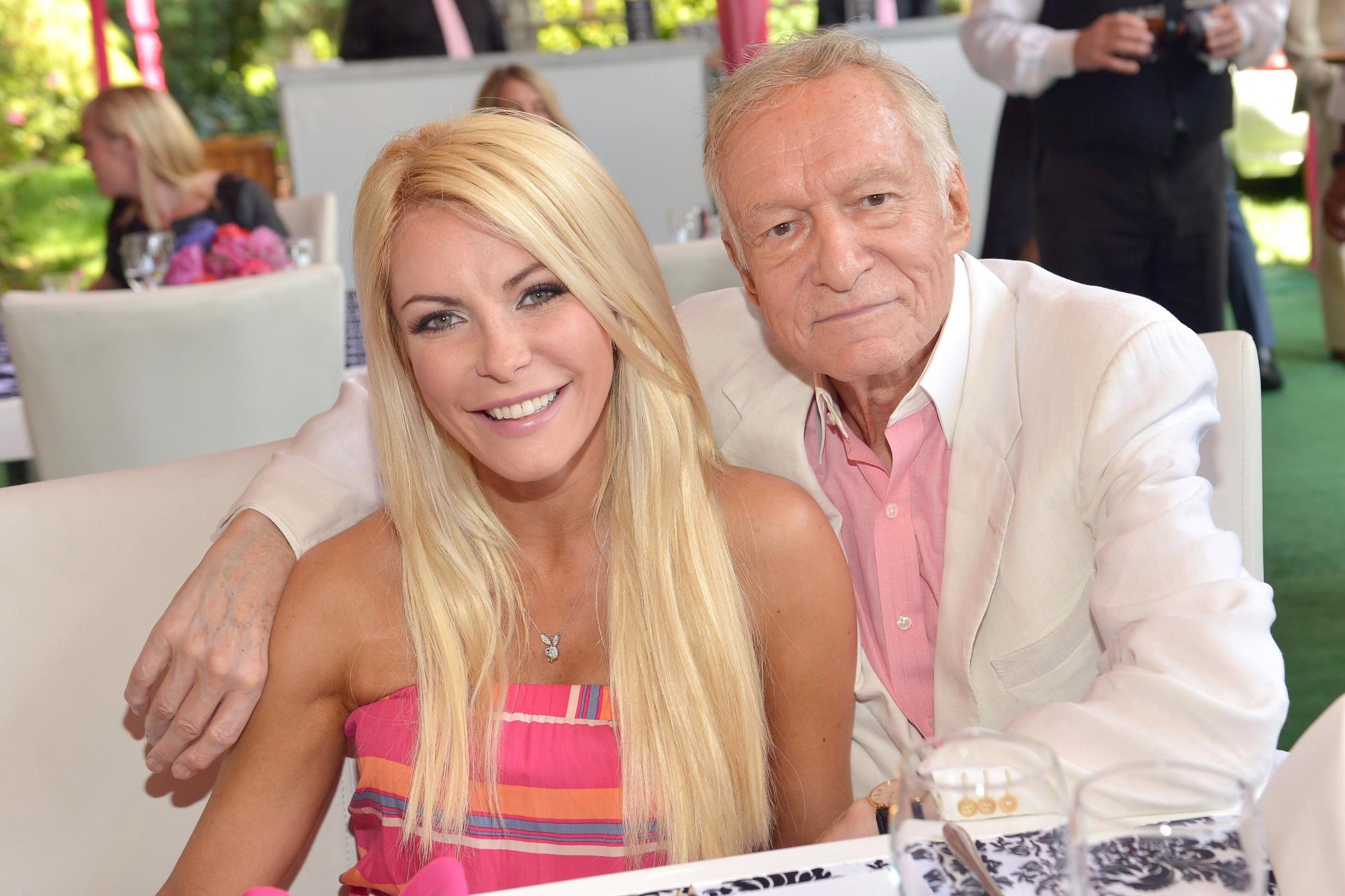Hugh Hefner: Playboy founder who embodied the contradictions of the sexual revolution
The publisher who tried to promote sophistication, journalistic integrity and freedom of individual rights, also became a byword for Viagra-ridden vulgarity

Your support helps us to tell the story
From reproductive rights to climate change to Big Tech, The Independent is on the ground when the story is developing. Whether it's investigating the financials of Elon Musk's pro-Trump PAC or producing our latest documentary, 'The A Word', which shines a light on the American women fighting for reproductive rights, we know how important it is to parse out the facts from the messaging.
At such a critical moment in US history, we need reporters on the ground. Your donation allows us to keep sending journalists to speak to both sides of the story.
The Independent is trusted by Americans across the entire political spectrum. And unlike many other quality news outlets, we choose not to lock Americans out of our reporting and analysis with paywalls. We believe quality journalism should be available to everyone, paid for by those who can afford it.
Your support makes all the difference.To live out one’s teenage fantasies when you’re in your eighties, to be hailed as co-author of an American social revolution, and for good measure to have an endangered subspecies of Florida rabbit named after you...
One way and another, it’s a pretty remarkable set of achievements – to be acknowledged even by those who persisted in seeing the man as a marketer of smut, throwing open the gates of Gomorrah for his hitherto innocent countrymen.
The giveaway of course is the animal – sylvilagus palustris hefneri, to give it its proper name – better known as the Lower Keys marsh rabbit. The name is the backhanded tribute of the US wildlife protection agency to Hugh Marston Hefner: founder of Playboy magazine, creator of the voluptuous bunny that was its mascot, and indefatigable silk pyjama-clad stud – at an age when most other men find a cup of Ovaltine as much excitement as they can handle.
Love him or loathe him, Hugh Hefner was undoubtedly a monument of American civilisation in the second half of the 20th century. He didn’t invent sex, or bring about the sexual liberation that took over from the prim and prosperous 1950s; that pioneering distinction must go to Dr Alfred Kinsey, whose report on male sexuality was published in 1948.
But no one grasped its significance quicker than the young Hefner – then a postgraduate student at Northwestern University in Chicago – who in 1949 wrote a term paper on the impact of the report on America’s existing sex laws.
A year or two earlier, he’d already given an even clearer hint of the future. Having served in the US Army in the closing months of the war, Hefner enrolled at the University of Illinois in Champaign-Urbana. There he found time to publish a humorous campus paper called Shaft, complete with a feature called “Co-ed of the Month” featuring a (clad) female student. Where co-eds led, Playboy playmates would soon follow.
Hefner graduated with degrees in psychology and creative writing, and eventually became a copywriter with Esquire magazine, but left in 1952 after being refused a $5-a-week pay rise. The next year he took his big gamble, raising $8,000 to launch a new magazine. It was originally to be called “Stag Party”, but the name ran into copyright problems.
The first issue featured a centrefold of a young actress totally nude on a red crimson sheet. At the time, it was shocking stuff, and the issue (undated because Hefner had no idea whether there would even be a second one) sold over 50,000 copies. The young actress was Marilyn Monroe – and Playboy was born.

A second masterstroke was the choice of logo. The bunny wore a dinner jacket to project sophistication. No less important, the creature was frisky, playful and utterly unthreatening, as well as blessed with proverbial procreational powers. The bunny conveyed Hefner’s intentions, but also said something about the man himself.
He exploited women – but as “lads” go, he was a gent. His genius was to grasp the suppressed aspirations of young American manhood – but he appreciated women too. The target audience was young urban males – but women were also invited to join the fun.
Tom Wolfe might have salaciously described Playboy as a “one-handed magazine”, but from the outset Hefner used it to promote not just more relaxed sexual mores, but its own entire lifestyle. The central fantasy might have been – as he once put it – “the girl next door with her clothes off”. But the very first editorial set out the greater ambition. The punter he was after would “enjoy mixing up cocktails and an hors d’oeuvre or two, putting a little mood music on the phonograph and inviting in a female for a quiet discussion on Picasso, Nietzsche or jazz.” As for the dessert, that went without saying.
Hefner’s attitude to sex was a conscious rebellion against America’s Puritan ethic and the conventions of the age. He grew up in a middle-class Chicago family, describing himself later as “a very idealistic, very romantic kid in a very typically Midwestern Methodist repressed home”. He wrote: “There was no show of affection of any kind, and I escaped to dreams and fantasies.”
With Playboy, those fantasies were acted out. The Kinsey/Hefner tandem changed America’s definition of virility. Pre-Playboy, real men climbed mountains, shot tigers and rode the rapids. The magazine moved manliness indoors. What mattered was the number not of home runs hit, but the number of women charmed and seduced – and the formula led to one of the greatest publishing successes of the century.
As revenues grew, Playboy featured big-name writers such as Steinbeck and Capote. Maybe they were an excuse if you were caught looking at the pictures, but Hefner wrote a whole series of editorials setting out “The Playboy Philosophy”, championing the rights of the individual and deriding the hang-ups and inhibitions of conventional US society.
In 1965, the first African-American Playmate appeared. Playboy clubs proliferated, complete with their bunny hostesses. The first Playboy Mansion, a 48-room pleasure palace that served as Hefner’s office and home (complete with a master bed that could accommodate 12 people) opened at 1340 North State Parkway in Chicago. In 1971, it was joined by a Playboy Mansion West in Los Angeles. At first Hefner – by now known simply as “Hef” – commuted between the two in his black-painted private commercial jet “Big Bunny”, but by 1975 he had moved to LA for good.
By this time, the magazine had perfected its main claim to journalistic excellence: the remarkable monthly interviews with the rich and famous that began in 1962, notable both for their length and their hard-hitting, revelatory style. The subjects ranged from movie stars and business tycoons to John Lennon and the Russian poet Yevgeny Yevtushenko. The most sensational of all, however, was with Jimmy Carter, shortly before he was elected President in 1976.

The interview lasted five hours. Carter’s handlers wanted to prove that a born-again southern Christian was no threat to more secular Democrats and younger voters. But the strategy backfired when the candidate let slip he had “lusted” after many women other than his wife – leaving Carter’s aides scrambling to make clear their man was not a serial adulterer and sexual maniac.
For “Hef”, though, it was proof his magazine was part of the serious media landscape. It was inconceivable Carter would have unburdened himself of such comments to Playboy’s raunchier competitors, Penthouse or Hustler (which were then locked in a “Pubic Wars” battle over who could show the most explicit material).
There was another reason why Carter may have let down his guard: Hefner was both a civil rights campaigner and a notable contributor to Democratic political candidates.
All the while, the ultimate swinging bachelor was living his American dream. In 1949, Hefner had married his college sweetheart, but 10 years later they were divorced. For the next three decades, he partied.
One year he claimed to have been “involved” with 11 out of the 12 monthly centrefold Bunnies. Not until 1989 did he crack and actually marry one of them (Kimberley Conrad, who adorned the January 1988 edition). By then, however, the attraction of being picked as a Playmate was less to do with winning Hef’s fickle heart, and seen more as a smart career move, hastening modelling and movie contracts. Often the girls were curiously unsexy: absurdly curvaceous with vast breasts spilling into parody.
Playboy was by now a multimedia empire. But in the 1980s, it fell on hard times, caught between far raunchier competition on video and a growing anti-porn movement. In 1985, Hefner suffered a minor stroke – later, though, he would call it a “stroke of fortune” – that hastened a business reorganisation and some re-ordering of his frantic life. From a peak of seven million, the magazine’s worldwide circulation had halved by 2006. But with revenues of some $350m (£260m) a year, Playboy Enterprises Inc was profitable (unlike Penthouse, which went bankrupt in 2003).
And Hef too was still going strong. He and Kimberley separated in 1999, but remained close. He continued to host spectacular parties at Playboy Mansion West – though as fuels, Diet Pepsi and Dexedrine were replaced by Viagra: strongly recommended in Hef’s Little Black Book of musings on life and sex, published in 2004.
Meanwhile, his female companions if anything got younger. In 2007, girlfriends number one, two and three were living with him at the Playboy Mansion, their exploits chronicled in the hit reality TV show The Girls Next Door.

In 2012, he married one of the new incumbents, the one-time Playmate Crystal Harris. (He was 86 at the time; she was 26.) In addition to Harris, his ex-wife and two sons, Hefner’s survivors include two children from his first marriage, Christie Hefner and David Hefner.
By the end, Hefner was an icon: as American as baseball or Norman Rockwell, a listed national monument. The image was tacky and kitschy. But few were not ready to forgive him all, so preposterous and infectious was his enthusiasm. His choice of final resting place is typical too: a long-ago purchased crypt at Westwood Memorial Park LA, next to the one housing Marilyn Monroe – the very first Playboy Playmate, all those years ago.
And Viagra, surely, couldn’t explain everything. How did Hef do it? Perhaps because, at heart, he remained a child. “I know I’m living out a lot of other guys’ fantasies,” he acknowledged late in life, “But what you need to understand is that I’m living out my own as well. That’s what it’s really all about.”
Hugh Marston Hefner, US magazine publisher and businessman, born 9 April, died 28 September 2017
Rupert Cornwell died 31 March 2017
Join our commenting forum
Join thought-provoking conversations, follow other Independent readers and see their replies
Comments